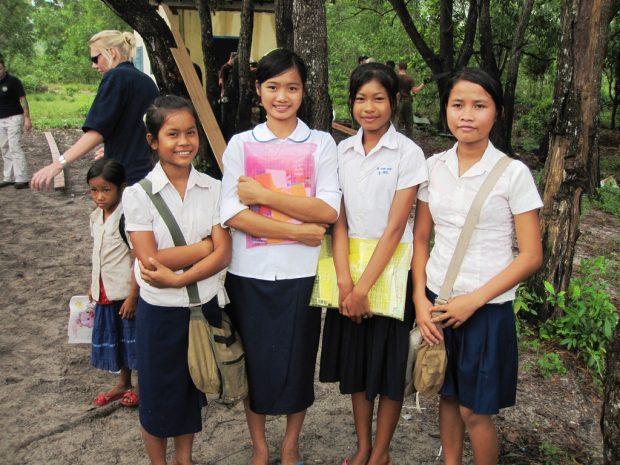Cambodian Education
The Cambodian education system has been improved for years after getting blame from the public for its poor and corrupt system during more than three decades of civil conflicts such as the Khmer Rouge “Killing Fields” regime from 1975 to 1979 when schools were completely closed and some even became prisons.
Since the country has gained complete peace in early 1999 and it integrated with the Association of Southeast Asia Nations (ASEAN), the Royal Government of Cambodia (RGC) tries to reform the Kingdom’s Educational System, and it is now back on the right tract with recognition from the public.The 10 nations of ASEAN consists: Brunei, Cambodia, Indonesia, Malaysia, Myanmar, Laos, Philippines, Singapore, Thailand, and Vietnam.
Before the French colonization between 1863 and 1953, the Kingdom’s traditional education was based on Buddhist monasteries, which gradually changed and was increasingly influenced by the colonial model.The education system now starts from kindergarten level before 6 years of age; then the Cambodian kids must go through primary school with 6 grades (1-6), lower secondary school with 3 grades (7-9) and high school with 3 grades (10-12) before moving to the higher education (faculty or university). When students cannot pass the final exam at grade 12, they can either repeat class or move to 3-year education (associate degree) at university – mostly private ones.
In recent years, in order to improve the general educational quality, RGC has offered each student who get grade A at the final exam of high school a new motorbike andfull scholarship foruniversities with 4-year time (some private universities spend 5 years as they need the first year for English class). Those who get grade A can also choose any subject they like for their university.
Through the Ministry of Education, Youth, and Sport (MoEYS), RGC intends to have the National Education for All (NEA)like other schools around the globe and continues to give the highest priority to equitable access with high-quality education, especially with basic ones.
While some rural schools still do not have enough textbooks for pupils, the RGC tries its best to provide free reading books and help set up libraries for them.
According to the MoEYS report, MoEYS provides greater emphasis to expanding early childhood education, expanding non-formal education, technical, and vocational training and expanding opportunities to access secondary education and post-secondary education through the continued and improved partnership among RGC, development partners, private sector, non-governmental organizations, communities, and parents.“Other strong focal points include strengthening the implementation of the Education Law, the teachers’ code of conduct, and good governance. The key components also include the capacity development of educational staff at all levels and the encouragement of decentralization,” the report reads.At the same time, in order to reduce corruption among educational staff and even teachers, RGC has increased their salary every year. Since the reform, many schools are run by private sector, NGOs, and communities from different countries and religions.
By Chhay Sophal






















































